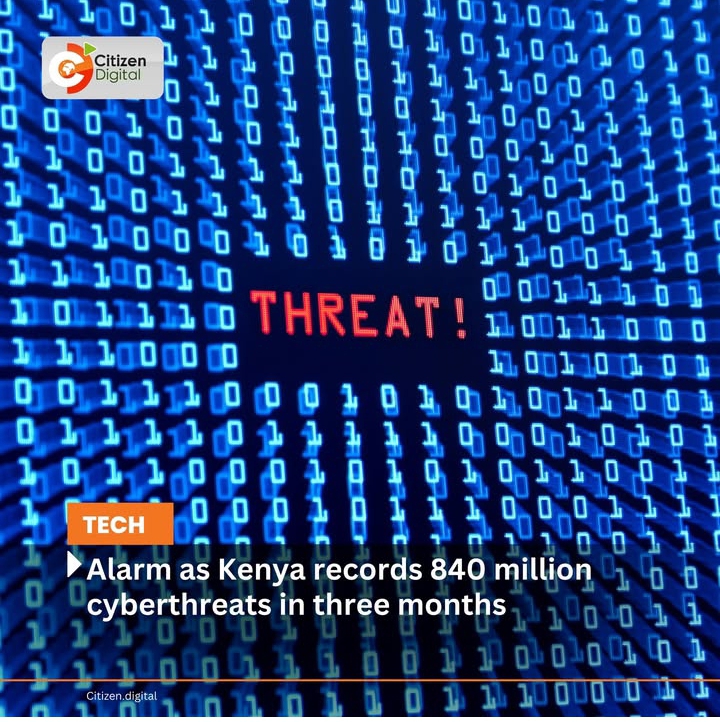And How to Protect Yourself
As Kenya continues to embrace the digital age, the rise of Internet of Things (IoT) devices has revolutionized many aspects of daily life, from improving convenience to driving business efficiency. However, with this explosion of connected gadgets comes a significant increase in cybersecurity risks. While the early focus may have been on devices like smart fridges and security cameras, today, one of the most common and concerning areas for cyber threats is wearable devices—specifically, smartwatches and other IoT-enabled wearables.
Wearables: A Convenient, Yet Vulnerable, Part of the IoT Ecosystem
In Kenya, the adoption of smartwatches, fitness trackers, and other wearable devices has seen steady growth. People use them to monitor health metrics, track fitness goals, and even make payments via NFC technology. These devices bring a lot of convenience to daily life but also introduce several cybersecurity risks.

Smartwatches in particular have become one of the most common IoT devices in Kenya. These sleek, portable gadgets are often paired with smartphones, creating an ecosystem of interconnected devices. But just as with any technology that connects to the internet, they present opportunities for cybercriminals to exploit weaknesses.
How Do Wearables Contribute to Cybersecurity Risks?
- Data Sensitivity
- Wearables collect sensitive personal data, such as heart rate, sleep patterns, physical activity, and sometimes even location. When poorly secured, this data can be accessed by hackers, leading to serious privacy violations. In a worst-case scenario, cybercriminals can use this information to carry out identity theft or sell it on the dark web.
- Connectivity Makes Them Vulnerable
- Most wearables rely on Bluetooth or Wi-Fi to sync with smartphones or other devices. If these connections aren’t properly secured, hackers can exploit vulnerabilities in the network, gaining access to your device, the data it stores, and even other connected devices like smartphones and laptops.
- Weak Security Protocols
- Many smartwatches and fitness trackers don’t have robust security features. For example, some devices might use weak or outdated encryption methods, which can be cracked by hackers. A lack of strong passwords or authentication on these devices further increases their vulnerability to attack.
- Lack of Regular Updates
- Unlike more traditional computing devices, many wearables don’t receive consistent security updates. This means that, over time, flaws in their software or firmware can go unpatched, leaving the devices susceptible to known exploits that cybercriminals can take advantage of.
- The Gateway Effect
- Because smartwatches and fitness trackers are often paired with smartphones, they act as a gateway into a larger network of IoT devices. If a smartwatch is compromised, it could provide hackers with access to your phone, allowing them to steal personal information, monitor your activities, or even control other smart gadgets in your home.
The Impact of These Risks on Kenya’s Digital Future
As of early 2025, Kenya has seen a 27.82% increase in the detection of cyber threats, many of which stem from the vulnerabilities inherent in IoT devices, including wearables. During the last quarter of 2024 alone, the Kenya Computer Incident Response Team (KE-CIRT/CC) recorded over 840 million cyber threats, many of which were tied to system misconfigurations and weak cybersecurity practices.
The increasing use of wearables—along with other IoT devices like smartphones—expands the attack surface for cybercriminals. The result is an environment where personal data is more exposed than ever, and cyber threats are evolving to exploit these new vulnerabilities.

What Can You Do to Protect Yourself?
In response to this growing threat, the Kenyan government has implemented new measures to enhance cybersecurity, such as the Computer Misuse and Cybercrime Management Regulations (2024). However, protecting yourself from the risks posed by wearables and IoT devices starts with you. Here’s what you can do:
- Update Regularly: Ensure your smartwatch and other wearable devices are updated with the latest security patches. Many IoT devices are vulnerable because they lack timely updates.
- Use Strong Authentication: Set up strong passwords and enable multi-factor authentication (MFA) on your devices to add an extra layer of security.
- Limit Data Sharing: Be selective about the data you share and connect your wearable devices only to trusted apps and networks.
- Secure Your Network: Ensure that your home Wi-Fi and mobile connections are secure. Use encryption and strong passwords to protect your network from unauthorized access.
- Monitor Device Connections: Regularly check which devices are connected to your smartwatch or fitness tracker. If you notice anything suspicious, disconnect it immediately and review security settings.
While the convenience and health benefits of smartwatches and other wearable devices are clear, we must all take steps to ensure that the IoT revolution does not come at the cost of our security and privacy. The Kenyan government, businesses, and individual users must prioritize cybersecurity, understanding that these devices, while small, can have big implications for personal and national security.
By taking the right precautionsAs smart gadgets like wearables become part of our everyday lives, it’s crucial we don’t overlook the risks that come with them. While these devices bring convenience and health benefits, they also present vulnerabilities that can impact our security.
As smart gadgets like wearables become part of our everyday lives, it’s crucial we don’t overlook the risks that come with them. While these devices bring convenience and health benefits, they also present vulnerabilities that can impact our security.
The key to navigating this IoT-driven world is simple: stay informed, secure your devices, and make cybersecurity a priority. By taking proactive steps, we can enjoy the perks of technology without compromising our privacy or safety. After all, it’s not just about embracing new tech—it’s about embracing it smartly.


















+ There are no comments
Add yours